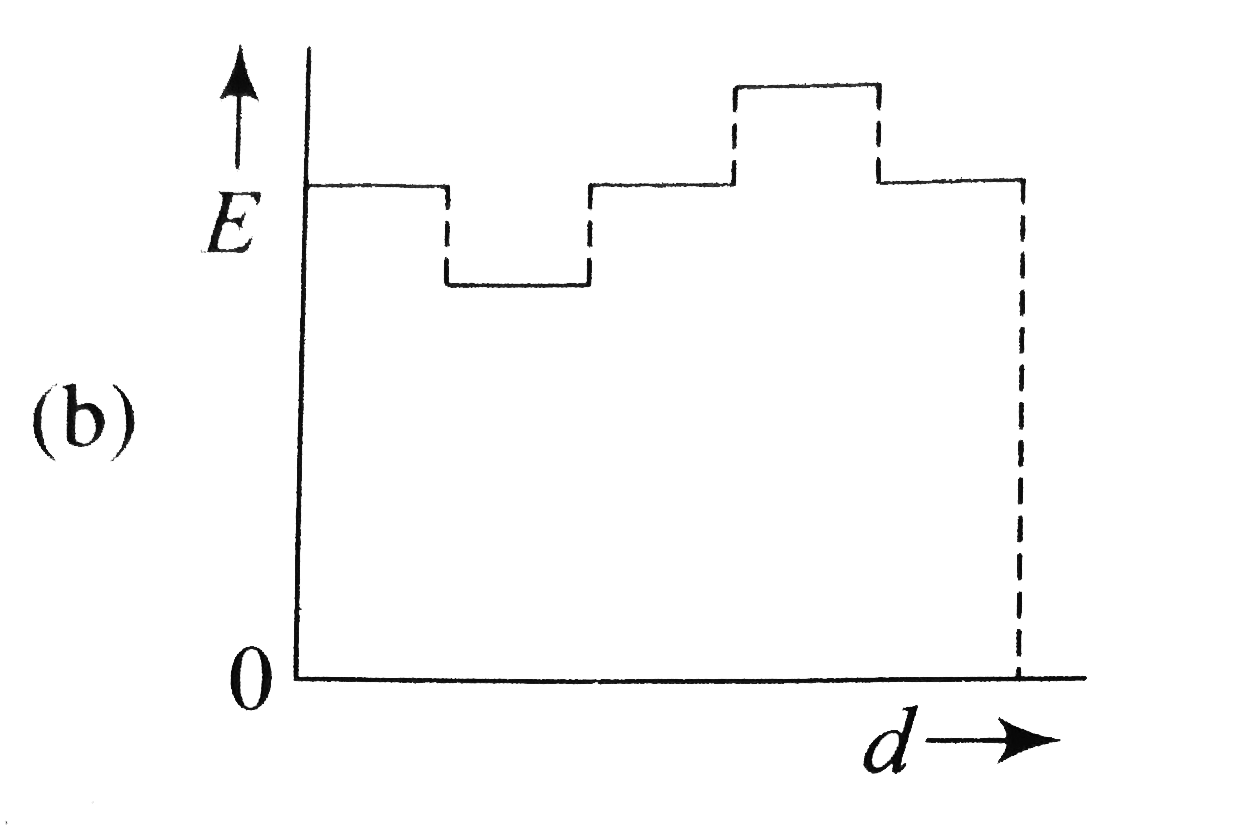In a photoelectric set up, the most energetic photoelectron from the material is introduced horizontally parallel to the parallel plate capacitor of length l and constant electric field E. The photoelectron gets deflected by d when it emerges ouit from the capacitor. The stopping potential for this electron is xEl28deV. Find x (neglecting the effect of gravity).
The correct Answer is:2
Topper's Solved these Questions
Similar Questions
shows two metallic plates A and B placed
. parallel to each other at a separaton d. A uniform
. electric field E exists between the plates in the direction
. from plate B to plate A. Find the potential difference
. between the plates.

View SolutionTwo thin dielectric slabs of dielectric constants K1 and K2(K1<K2) are inserted between plates of a parallel plate capacitor, as shown in the figure. The variation of electric field E between the plates with distance d as measured from plate P is correctly shown by

View Solution
Knowledge Check
A charged particle passes through a uniform electric field existing between the parallel plates of a capacitor. The length of each plate is l. Its initial velocity is parallel to the plates. When it emerges from the field, its deflection from its initial path is δ, and its angular deflection from its initial directioin θ. Then,θ is equal to
Aδ/lB2δ/lCδ/2lDnone of theseTwo thin dielectric slabs of dielectric constants K1 and K2(K1<K2) are inserted between plates of a parallel plate capacitor, as shown in the figure. The variation of electric field E between the plates with distance d as measured from plate P is correctly shown by
 A
A B
B C
C D
D
A parallel plate capacitor has two layers of dielectric as shown in figure. This capacitor is connected across a battery. The graph which shows the variation of electric field (E) and distance (X) from left plate.
 A
A B
B C
C D
D
Figure shows two metallic plates A and B placed parallel to each other at a seperation d. A uniform electric field E exists between the plates in the direction from plate B to plate A. Find the potential difference between the plates.

View SolutionAn electron is emitted with negligible speed from th nagative plate of a parallel plate capacitor charged ot a potential difference V. The separtion between the plates is d and a magnetic field B exists in the space as shown in . Show that the electron will fail to strike the upper plate if ltdgt (2meVeB20)12.

View SolutionAn electron is emitted with negligible speed from th nagative plate of a parallel plate capacitor charged ot a potential difference V. The separtion between the plates is d and a magnetic field B exists in the space as shown in . Show that the electron will fail to strike the upper plate if ltdgt (2meVeB20)12.

View SolutionAn electron (e,m) is projected into a uniform electric field E vertically downward between parallel plates at separation d, with velocity v0. The electron enters the electric field at a point midway between the plates. Find
(a) the magnitude of electric field if electron emerges from the electric field just at the edge of upper plate.
(b) the direction of the velocity of electron as it emerges from the electric field.
(c ) the equation of trajectory followed by electron.
The length of plates is L and consider only electric force.
View SolutionAn electric field of intensity E is set up between two parallel plates of length L. An electron beam enters the field at an angle α>0 to the plates and leaves it at an angle β<0 (Fig.). Find the initial velocity of the electrons. The force of gravity is to be neglected.

View Solution
